Abstract
The disappearance of bacteria from the normal urinary bladder is apparently a function of two host defense mechanisms: the mechanical clearance of organisms by voiding, and the antibacterial activity of the bladder wall. This study quantified the relative contribution of each of these mechanisms to the resistance of the bladder to bacterial infection.
32Phosphorus-labeled E. coli. S. aureus, and P. mirabilis were each injected into the urinary bladders of unanesthetized female guinea pigs. At intervals after voiding, the bladders were removed, washed, homogenized, and assayed for residual radioactivity and viable bacteria. Mechanical clearance was measured by the changes in total radioactive count. Antibacterial activity was quantified by comparing the bacterial to radioactive ratios of the original bacterial inoculum with similar ratios in the bladder homogenates.
More than 99.9% of the bladder inoculum was rapidly excreted and about 0.1% (104-105) organisms remained attached to the bladder wall. Of those E. coli attached to the bladder, rapid sequential reduction in viability occurred and reached a level of 85% loss at 30 min after inoculation. 4 hr after challenge, less than 10% of those organisms still attached to the bladder mucosa remained viable. P. mirabilis was handled with equal facility, but S. aureus showed a reduction in viability of only 46% at 1 hr and 67% at 4 hr after inoculation. 6 hr after infection with S. aureus, 6 of 12 guinea pig bladders showed multiplication of the organisms still attached to the bladder wall; only 1 of 12 animals challenged with E. coli had comparable multiplication.
The mechanism whereby the bladder wall kills bacteria is unclear, but it did not appear to be related to an antibacterial activity of urine, clumping of organisms on bladder mucosa, phagocytosis by leukocytes, or serum levels of bactericidal antibody. Although it is clear that the bladder exhibits intrinsic antibacterial properties, the role of this defense mechanism in the pathogenesis of urinary tract infection requires further clarification.
Full text
PDF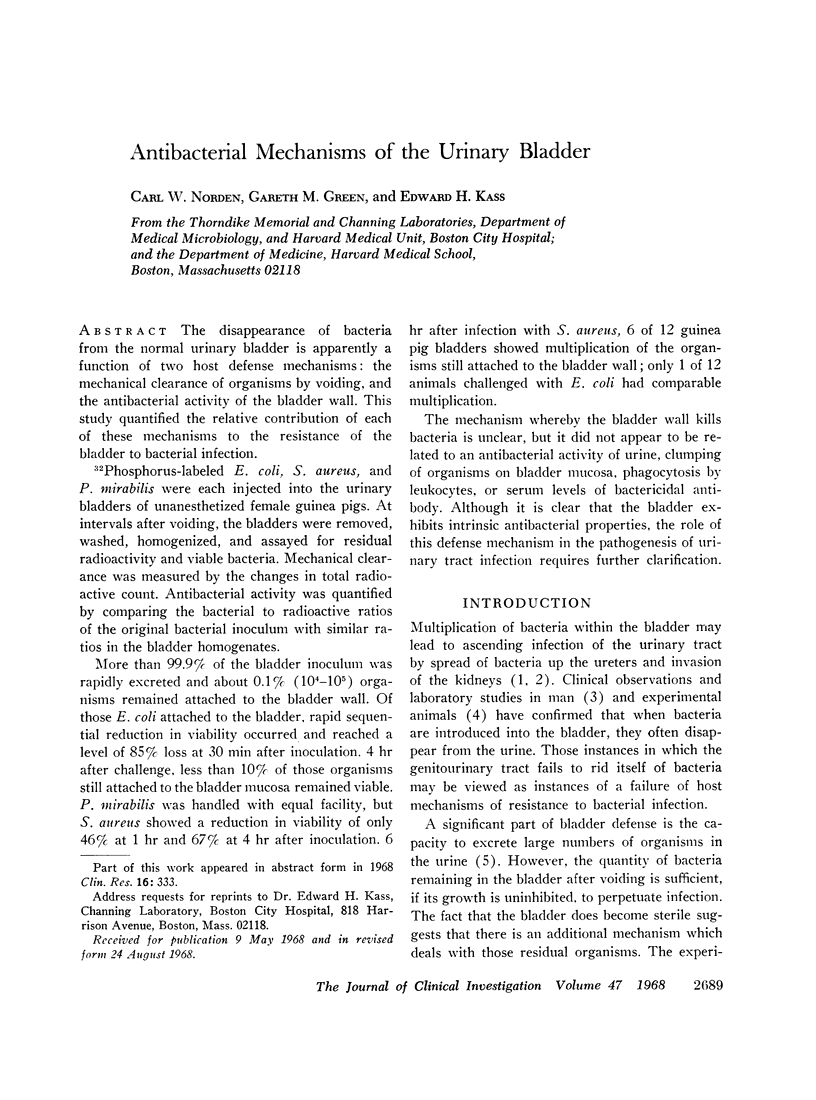
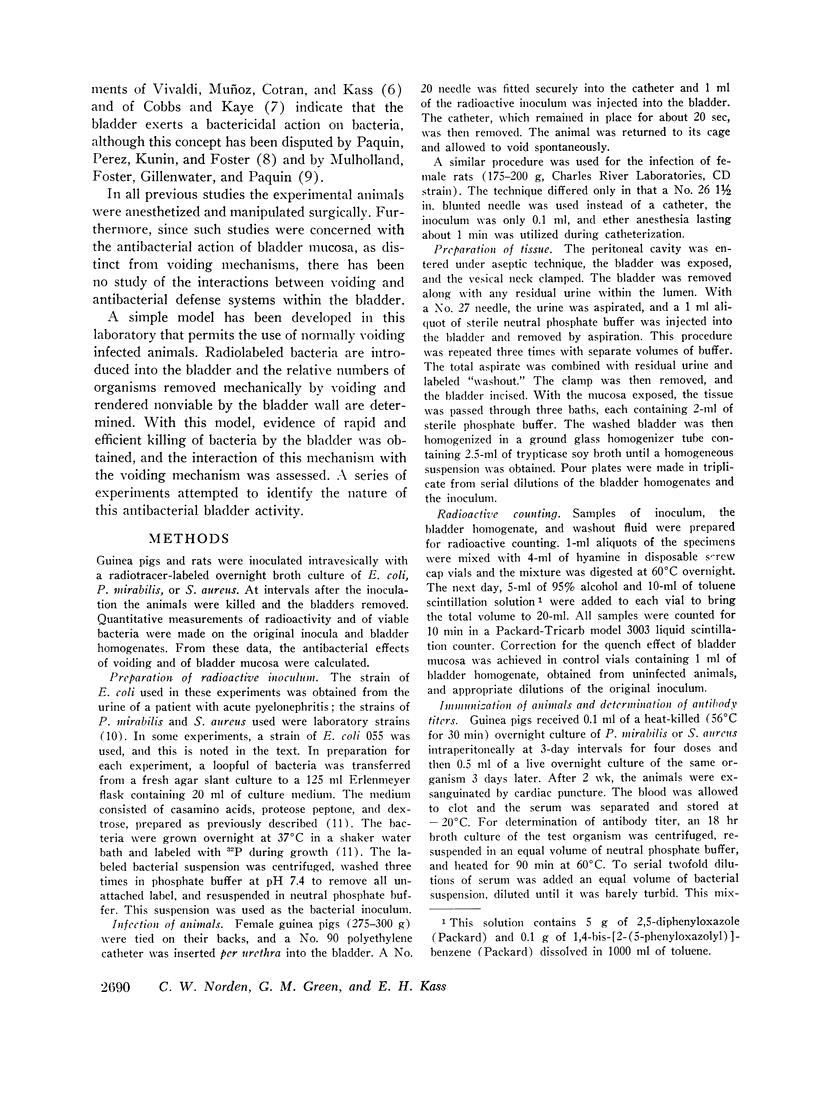
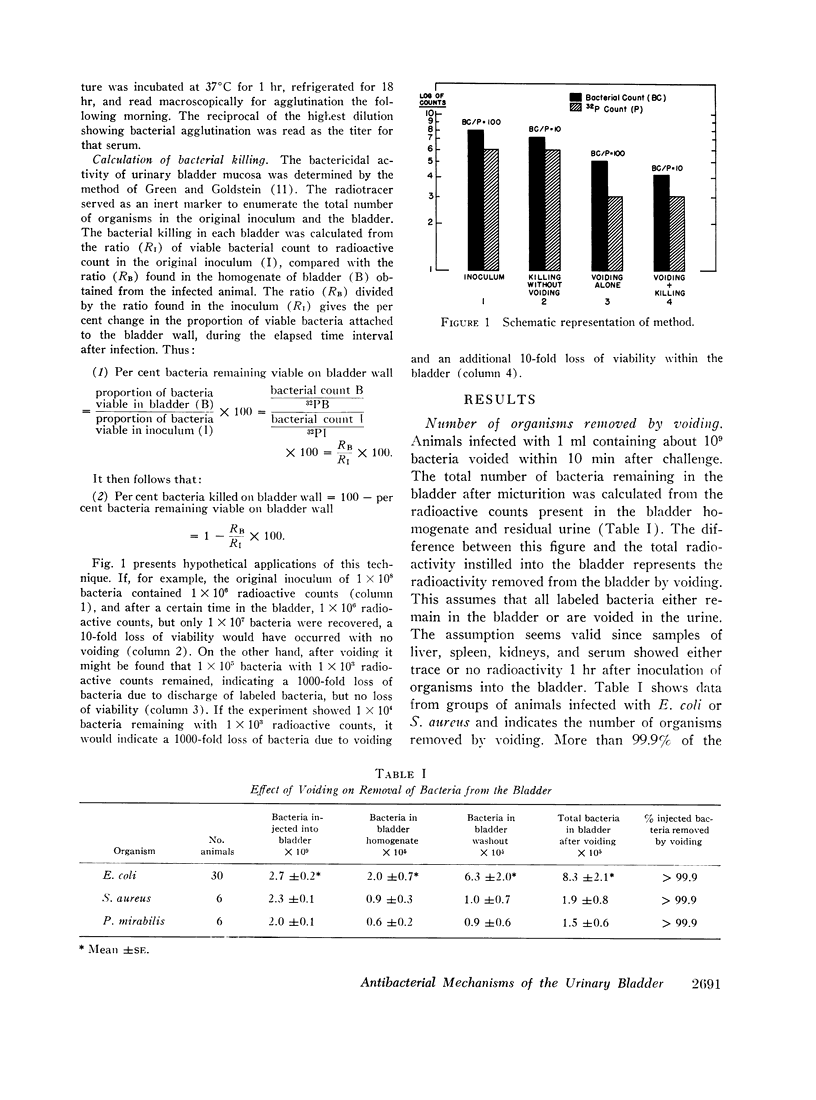
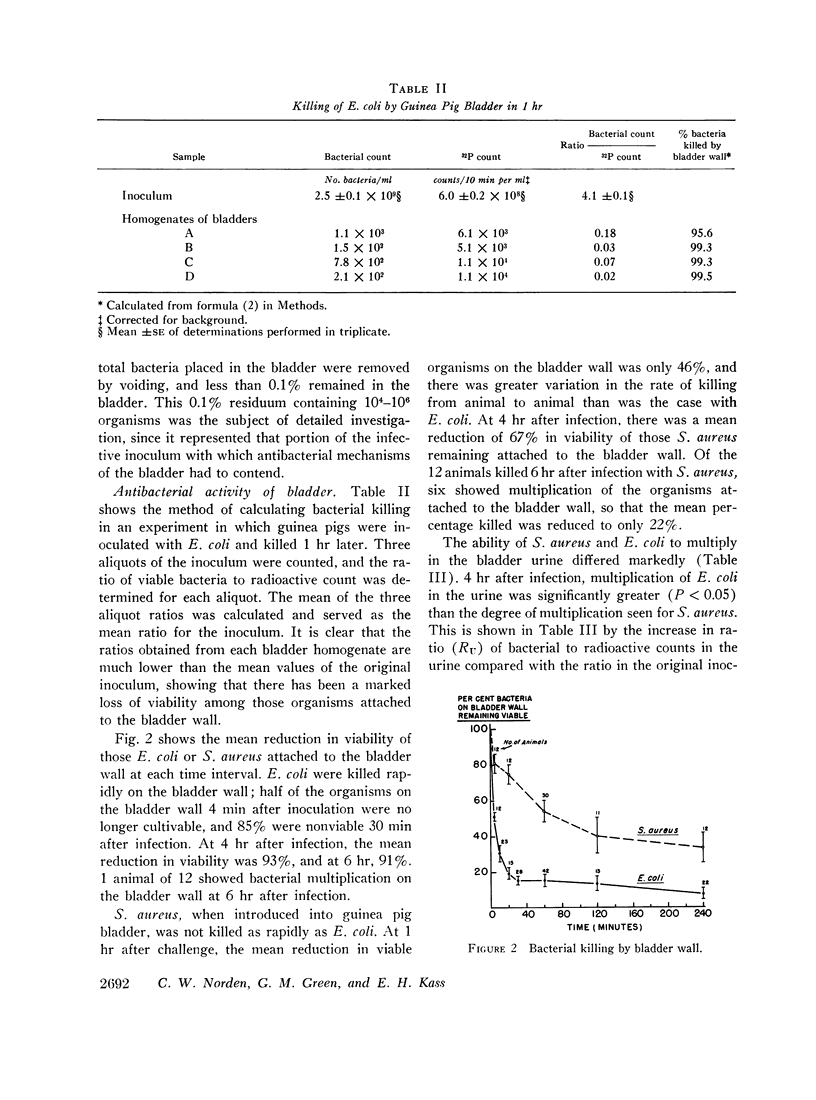
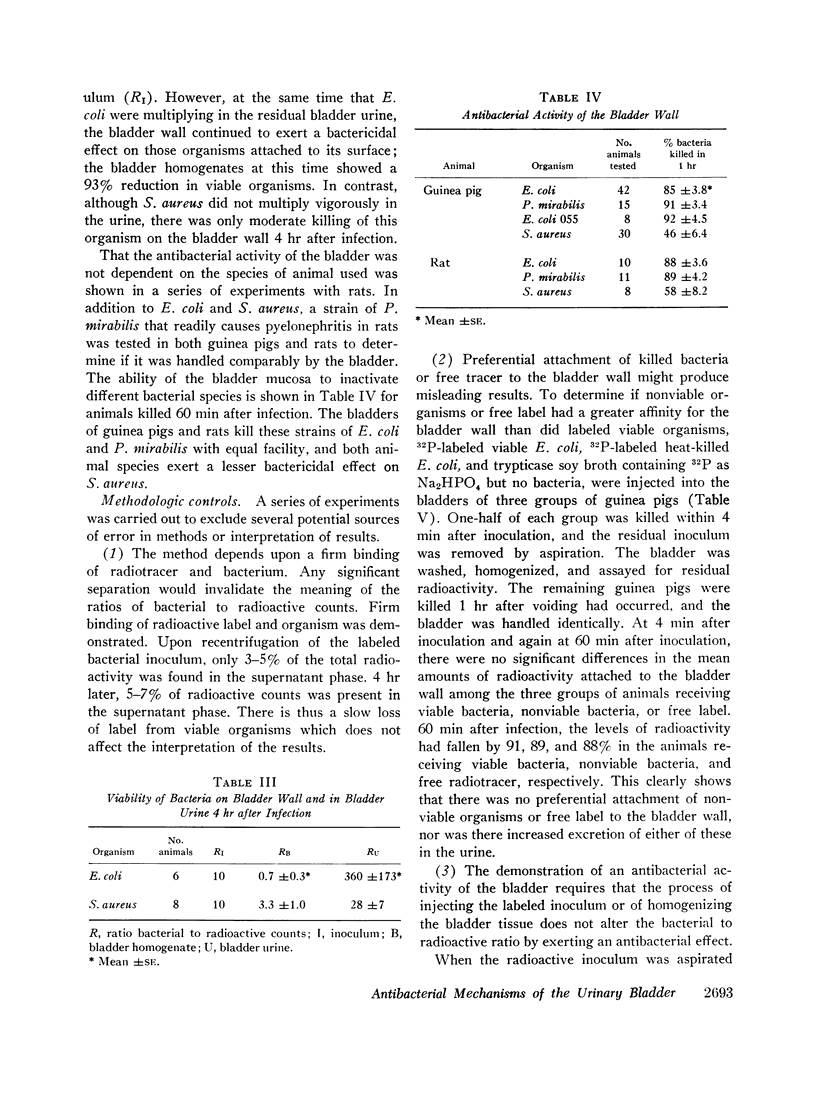
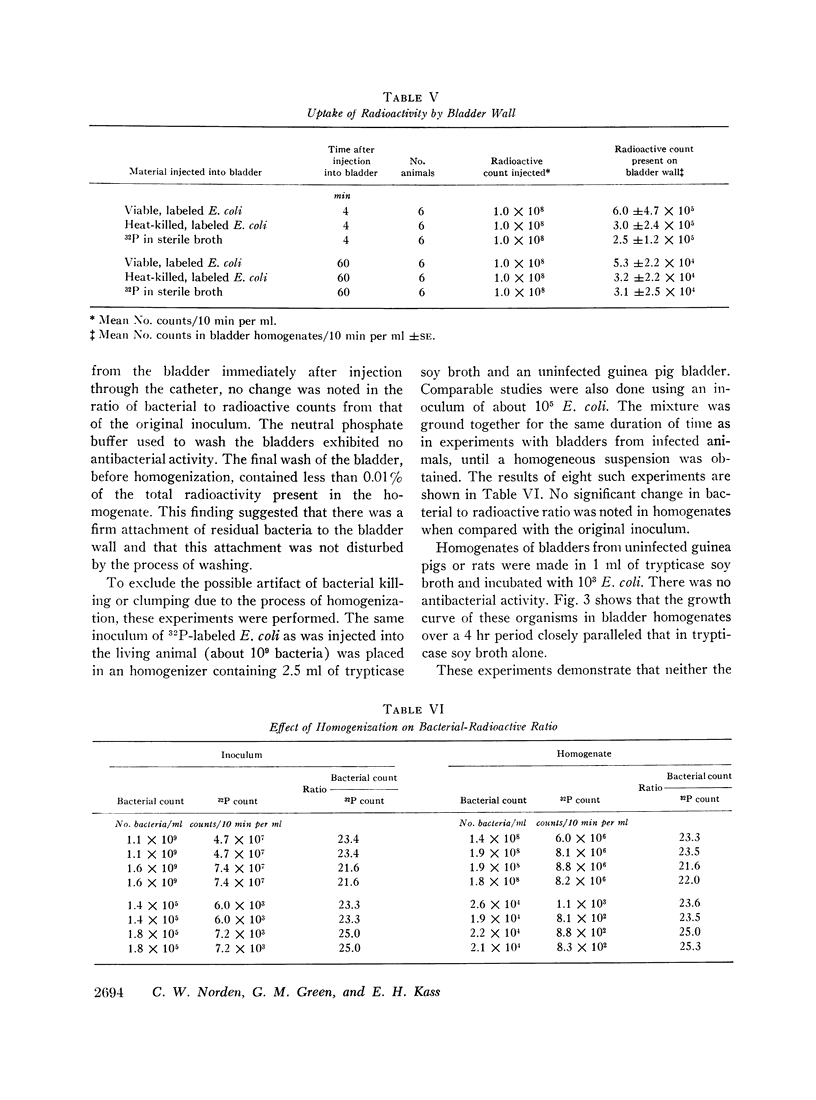
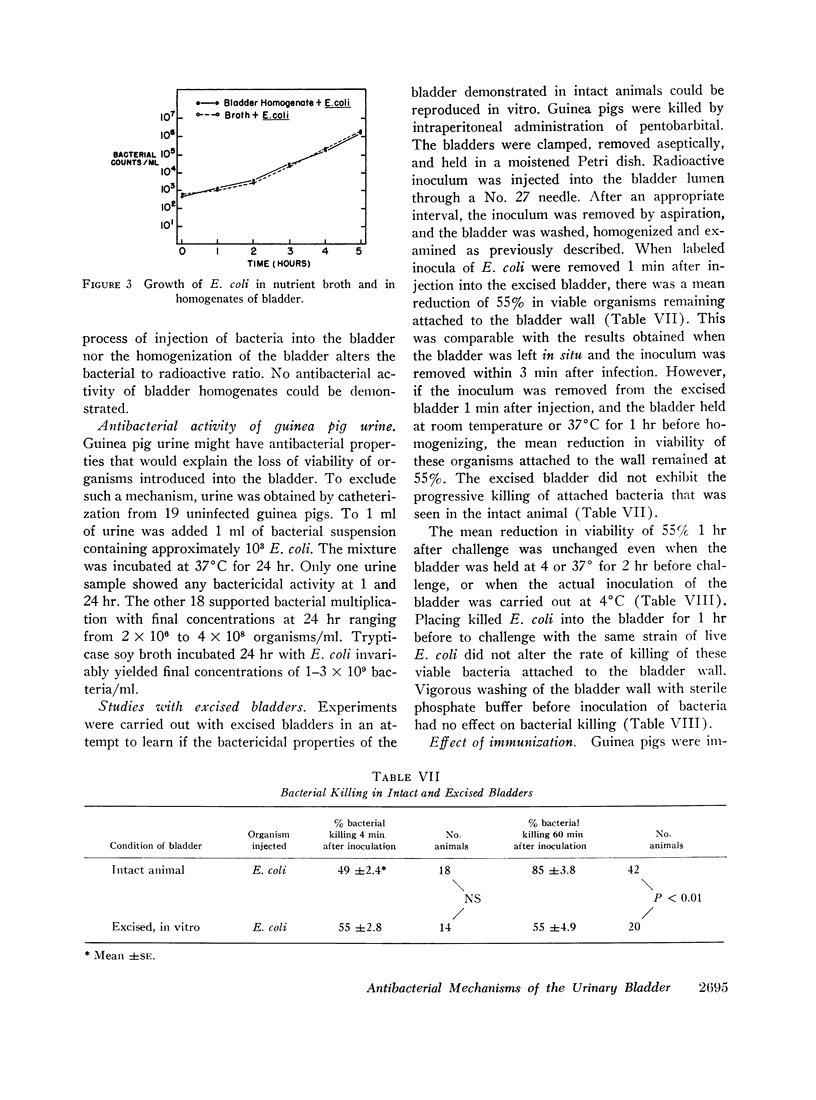
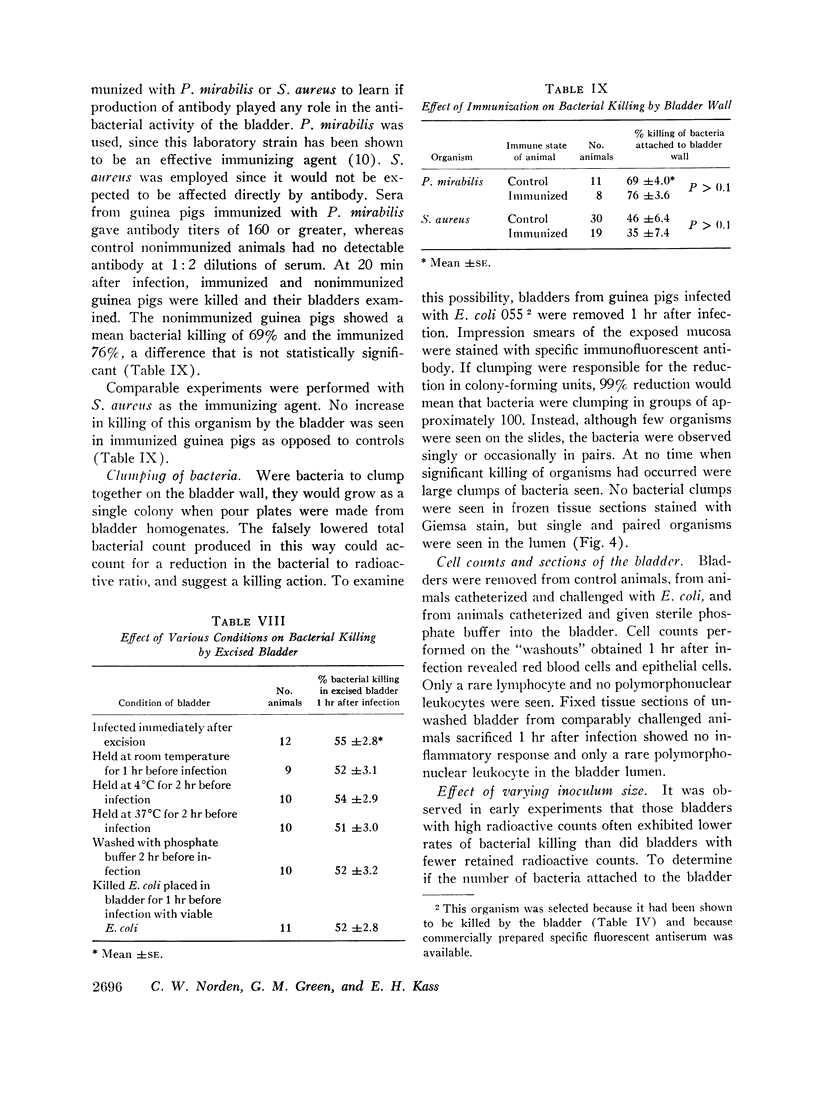
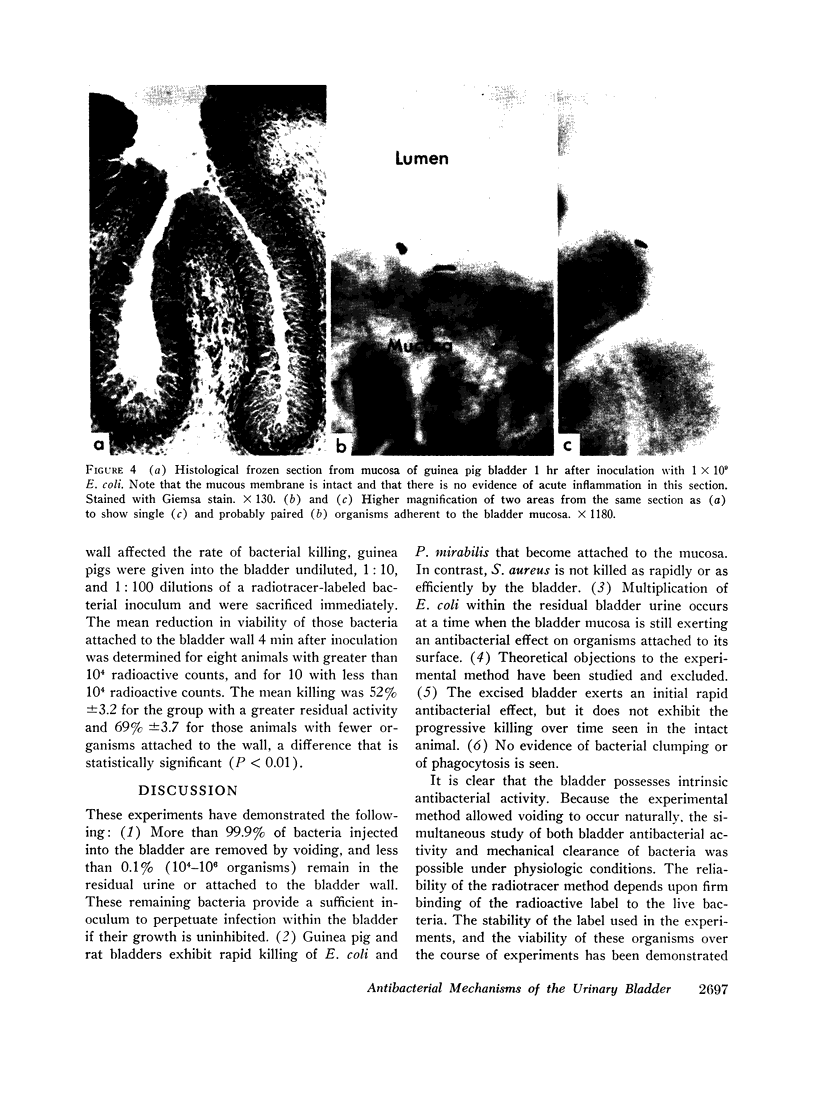
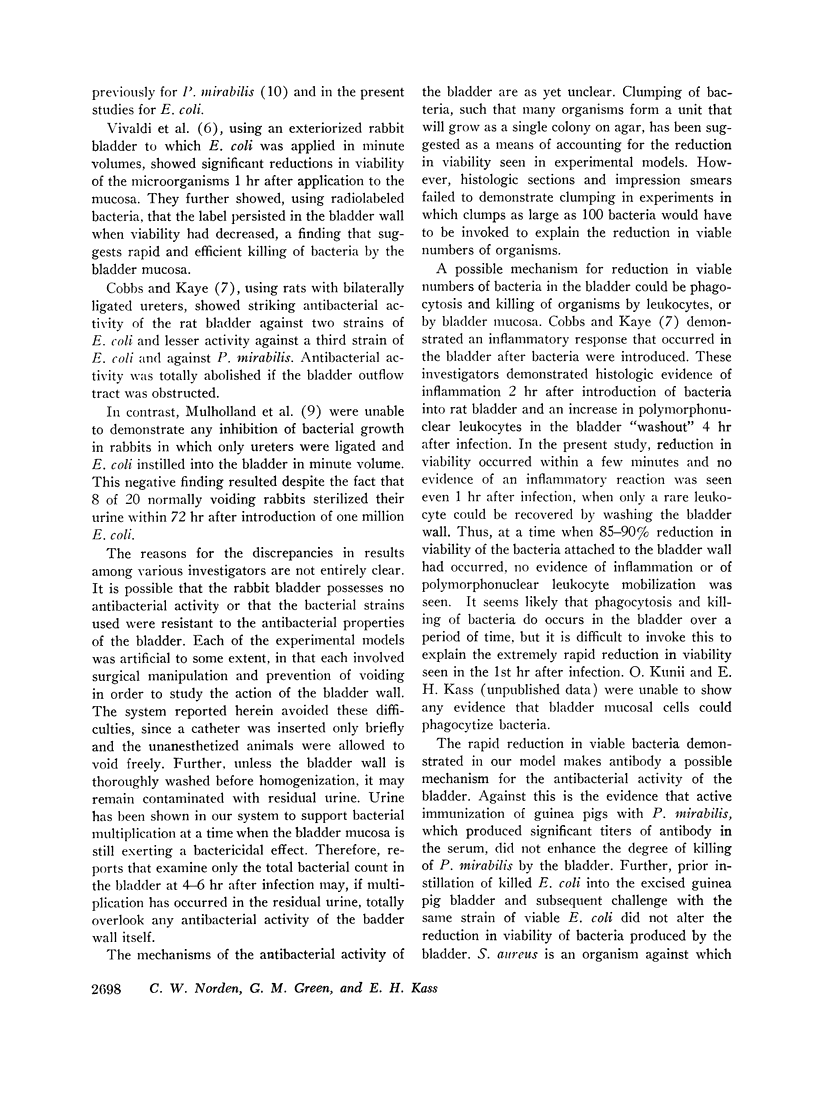
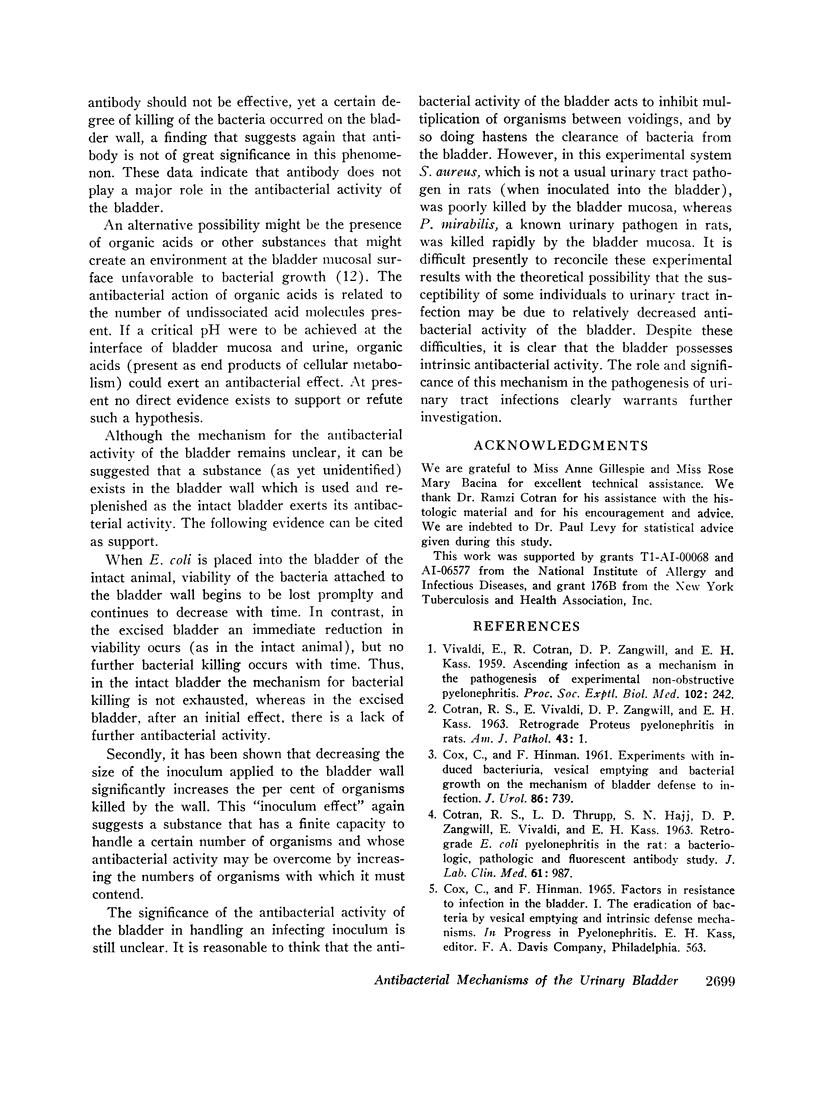
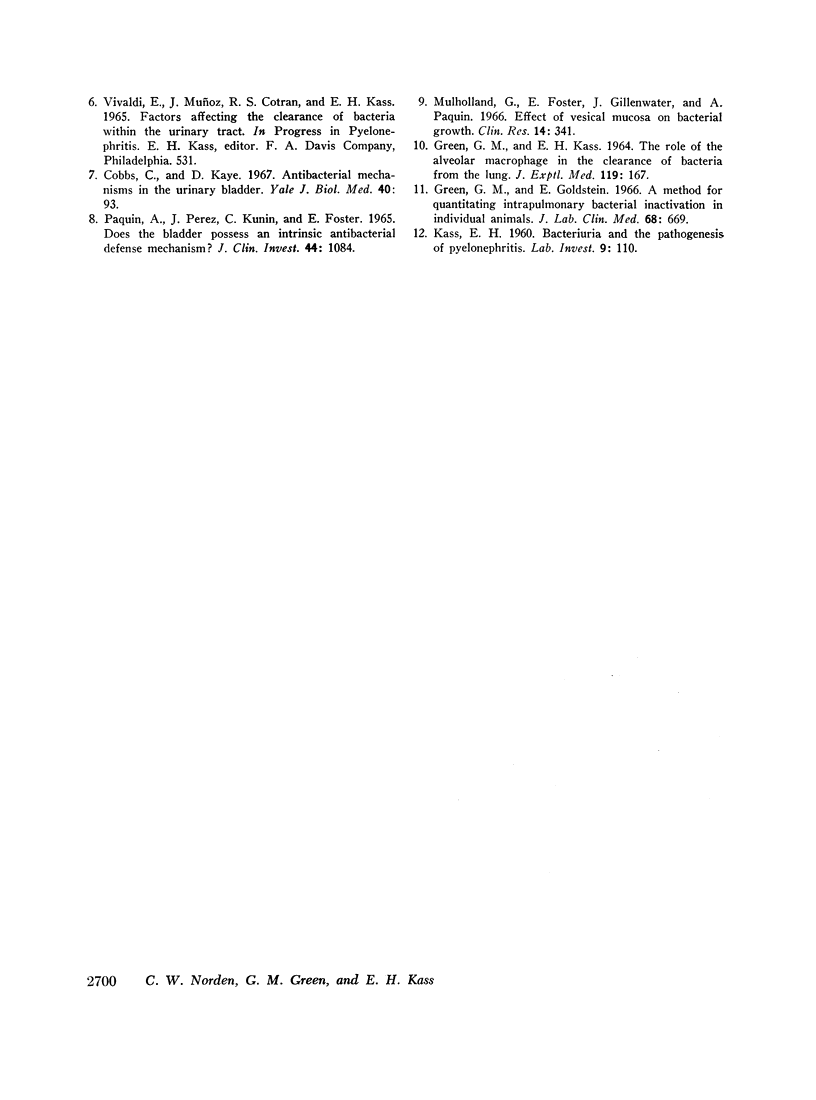
Images in this article
Selected References
These references are in PubMed. This may not be the complete list of references from this article.
- COTRAN R. S., THRUPP L. D., HAJJ S. N., ZANGWILL D. P., VIVALDI E., KASS E. H. Retrograde E. coli pyelonephritis in the rat: a bacteriologic, pathologic, and fluorescent antibody study. J Lab Clin Med. 1963 Jun;61:987–1004. [PubMed] [Google Scholar]
- COTRAN R. S., VIVALDI E., ZANGWILL D. P., KASS E. H. Retrograde Proteus pyelonephritis in rats. Bacteriologic, pathologic and fluorescent-antibody studies. Am J Pathol. 1963 Jul;43:1–31. [PMC free article] [PubMed] [Google Scholar]
- COX C. E., HINMAN F., Jr Experiments with induced bacteriuria, vesical emptying and bacterial growth on the mechanism of bladder defense to infection. J Urol. 1961 Dec;86:739–748. doi: 10.1016/S0022-5347(17)65257-1. [DOI] [PubMed] [Google Scholar]
- Cobbs C. G., Kaye D. Antibacterial mechanisms in the urinary bladder. Yale J Biol Med. 1967 Oct;40(2):93–108. [PMC free article] [PubMed] [Google Scholar]
- GREEN G. M., KASS E. H. THE ROLE OF THE ALVEOLAR MACROPHAGE IN THE CLEARANCE OF BACTERIA FROM THE LUNG. J Exp Med. 1964 Jan 1;119:167–176. doi: 10.1084/jem.119.1.167. [DOI] [PMC free article] [PubMed] [Google Scholar]
- Green G. M., Goldstein E. A method for quantitating intrapulmonary bacterial inactivation in individual animals. J Lab Clin Med. 1966 Oct;68(4):669–677. [PubMed] [Google Scholar]
- KASS E. H. Bacteriuria and the pathogenesis of pyelonephritis. Lab Invest. 1960 Jan-Feb;9:110–116. [PubMed] [Google Scholar]



